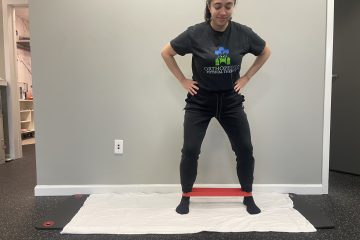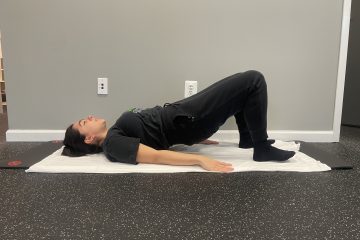
Men, women, and people of all genders and sexuality can experience difficulty achieving orgasm.
Orgasms and pleasure are complex. They are experiences that can be influenced by the musculoskeletal system, nervous system, mood, hormones, past experiences/trauma, mental health, body image, psychological well being, relationships, stress, sleep, nutrition, and much more.
What even is an orgasm?
An orgasm is a brain event typically triggered by genital stimulation which results in involuntary rhythmic contractions of pelvic muscles.
An orgasm can also be triggered by touch of other body parts, fantasy, sleep, and certain medications.
In order to understand why people can experience difficulty achieving orgasm, it’s important to understand the path from arousal to orgasm and what physiologically needs to occur.
- Step 1: Arousal begins with a combination of mental and physical input. Typically this is stimulation of the glans of the penis or glans of the clitoris. This triggers the parasympathetic nervous system (rest and digest phase).
- Step 2: Stimulation of the glans and the parasympathetic nervous system lead to vasodilation of the blood vessels. The vessels in the penis and clitoris expand and fill with blood to become erect.
- Step 3: As blood flow to the genitals increases, lubrication in the vagina and urethra increases.
- Step 4: Once the mental and physical stimuli has reached the necessary threshold, the spinal cord emits sympathetic impulses that cause rhythmic contraction of the pelvic muscles (orgasm).
In order for orgasm to occur, the body needs to be able to relax, stretch, and reach a full state of arousal.
So how can pelvic floor physical therapy help if you or someone you love is unable to fully go through all the processes to reach orgasm?
At OrthoPelvic, we use a systematic and individualized approach! We do not prescribe a few pelvic floor exercises and send you on your way. Complex issues require complex solutions.
In pelvic floor PT, we assess and treat the muscles, nerves, and integrated pathways responsible for arousal, erection, and orgasm.
We start by stretching and relaxing the pelvic floor muscles that are themselves responsible for arousal, erection, and orgasm. Without the ability to stretch and relax that area, it can be difficult to achieve a full erection and state of arousal.
We also need to address the surrounding muscles, such as the glutes, low back, abdominals, hips, and inner thighs. These areas connect into the pelvic floor, so if the muscles are tight in the surrounding areas, it can prevent the pelvic floor from working optimally.
The pudendal nerve, which comes out of the lowest part of the spine, is the nerve responsible for carrying pleasure signals from the genitals to the spinal cord and up to the brain. Tight muscles around the pudendal nerve can make the signaling slow, weak, or painful, as opposed to pleasurable.
And we also need to retrain the patterns between the muscles and the brain. If things have previously been painful or uncomfortable with intercourse, those past experiences can influence your ability to achieve orgasm. Your physical therapist will teach you (and your partner) how to make intercourse pleasurable again so that you can achieve orgasm.
Pleasure is important! Orgasms are good for you! At OrthoPelvic PT, we can help you lead your most pleasure-filled life.
Curious to learn a little bit more? Schedule your FREE 10-minute consult call today ✨
Be empowered in education,
OrthoPelvic Physical Therapy


